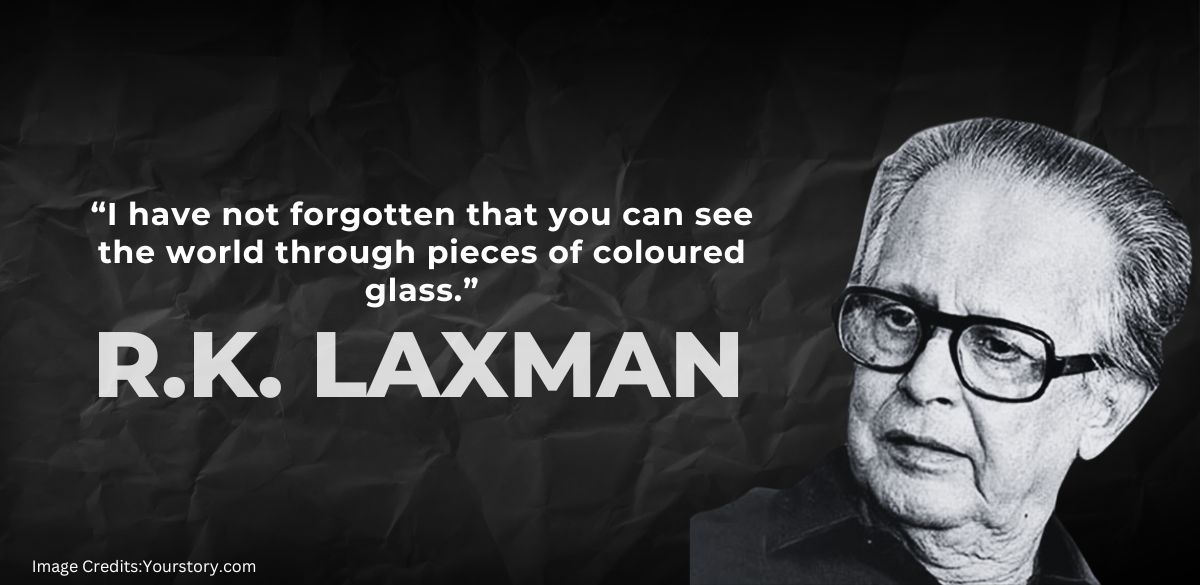Rasipuram Krishnaswami Laxman, popularly known as R.K. Laxman, was more than just a cartoonist, a face of the millions of ordinary Indians in scores and scores of cartoons featured in The Times of India. Born on 24th October 1921 in Mysore, India, Laxman was born to a family of eight children, with him being the youngest sibling of famed novelist R.K. Narayan. His interest in art dates back to his childhood, when he would draw caricatures of teachers and jot writings on the walls of his home. The Sir J.J. Institute of Applied Art rejected him for “lacking talent”,-but this did not deter Laxman from pursuing his love for drawing.
Table of Contents
The Beginning of The Cartoonist’s Journey
When Laxman started illustrating stories by his brother R.K. Narayan for The Hindu, his career took a flying start. His first full-time job as a political cartoonist was at the Free Press Journal in Mumbai. It is true, however, that it was during his stint in the Englishman and later with The Times of India that he became a household name. Here, in 1951, Laxman invented the Common Man, who would transform into the symbol of his satirical genius in the years to come. The Common Man, in a checked coat, bald head, and bewildered expression, stood silently by the happenings of post-independence India. He used his daily cartoon strip, You Said It, to comment on the absurdities in Indian politics, social issues, and corruption most genuinely and humorously.
The Satirical “Common Man” & More
Laxman’s work always remained invested in the everyday struggle of Indian society. He was unusually adept at piercing the noise of politicians and bureaucracy to present the world from the commoner’s point of view. Never to his credit did the cartoons take political sides, but they always told the truth—the often unsaid but undenied truth. He took complex issues ranging from economic disparity to political scandals and raised them in simple drawings. Laxman’s Common Man tried to witness every twist and turn in India’s democratic journey and make his way into the people’s hearts.
Laxman was a cartoonist but had creativity that went beyond cartoons. His artistic hand found its way into designing Gattu, the mischievous mascot of Asian Paints, and drawing stories for the famous TV serial called Malgudi Days, adapted from his brother’s works. He featured in many Hindi and Tamil movies through cartoon sketches.
Behind the Cartoonist’s Canvas
Although there is a tinge of humor in his artwork, Laxman’s life wasn’t one of roses and camellias either. Kumari Kamala was his first wife, whom he soon divorced. His most crucial test was, however, when he went into a coma in 2003 after suffering a stroke that partly paralyzed him. Still, he remained productive until the very end, producing cartoons with the same acuity with which he began. R.K. Laxman breathed his last on 26th January 2015, but his legacy of being timeless shall live on in cartoons and their characters that shall forever give voice to the struggles of Indian masses.
The Legacy
Laxman is remembered for his immense contributions to Indian art and journalism and was a multiple-award winner, for example, in Padma Bhushan, Padma Vibhushan, and the Ramon Magsaysay Award. He was the last of a generation, but his cartoons are still inspiring generations.
The post The Common Man’s Voice: A Tribute to R.K. Laxman appeared first on The Talented Indian.
